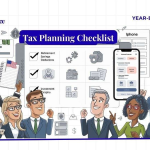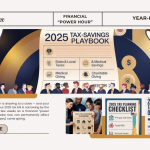$300 direct deposit: The Child Tax Credit (CTC) helps families in the United States. It is an important financial support program. In 2025, many families will still benefit from this program. It gives direct financial help to parents and guardians raising children.
The $300 direct deposit monthly payments are part of this program. Knowing how they work can help families get the most benefits. In this article, we’ll explain everything you need to know about the CTC in 2025, including eligibility, payment structure, and the important dates you must keep in mind.
Do you want to check how much you received as a Child Tax Credit? Calculate your child’s tax credit.
What is the Child Tax Credit?
Download – Child Tax Credit Form 1040 Schedule 8812

The Child Tax Credit (CTC) is a program created by the U.S. government to support families with children financially. It helps offset the costs of raising children, such as food, housing, and healthcare. This credit has been around for many years. It became more important in 2021 when the government expanded it. This change was part of the American Rescue Plan.
The program provides monthly payments for eligible families. This means families no longer have to wait until tax season to get their credit; they can receive direct monthly payments throughout the year. In 2025, the $300 direct deposit for families with young children continues to be a vital lifeline for many.
Also Read: Surprising Financial Landscape for Families with Children
Recent Changes to the Child Tax Credit
The CTC has changed recently, particularly during and after the American Rescue Plan Act of 2021. During that period, the program increased the amount families could receive. For example, parents of children under six could receive up to $300 per month, while families aged 6 to 17 received up to $250.
Although these adjustments were only temporary, they significantly influenced families by allowing them to receive help monthly instead of all at once. Remember that these higher payments were only temporary and that the CTC’s structure can change in 2025.
How is the CTC Payment Structured?

The Child Tax Credit payments are structured to help families with different financial needs based on their children’s age. The logic behind this is simple: younger children often require more care, which comes with higher costs.
- $300 per month for children under 6—These children are usually in the most expensive stage of life and need childcare, medical care, and other essentials.
- $250 per month for children aged 6 to 17 – While older children still incur costs like school supplies, extracurricular activities, and basic needs, the financial strain tends to be less than that for younger children.
These monthly payments make it easier for families to manage their finances regularly rather than waiting for an annual lump sum at tax time.
Unlock Financial Relief: Tax Benefits Every Family Should Know
Who is Eligible for the $300 Direct Deposit 2025 (Child Tax Credit)?

You must meet specific eligibility requirements for the $300 Direct Deposit (or other CTC payments) in 2025. The Internal Revenue Service (IRS) sets these requirements to ensure that the benefits go to those who need them.
1. Citizenship and Residency Requirements
You must be a U.S. citizen or resident alien. The children you claim must also be U.S. citizens, U.S. nationals, or U.S. resident aliens. Additionally, you must have lived in the United States for at least half the year to qualify for the credit. This ensures that the government directs the support to families who are permanent members of American communities.
2. Age of Children
The Child Tax Credit is available to families with children under 17 years old. So, your child must be 16 or younger by the end of the year to qualify for the credit. If your child turns 17 during the tax year, they will not be eligible for the payment.
3. Social Security Numbers
The claiming parent (or guardian) and the child must have valid Social Security Numbers (SSNs). This is a key requirement to ensure the benefits go to those adequately documented in the U.S. tax system.
4. Income Limits
You can’t get the entire Child Tax Credit if your salary is too high. Once a family’s income reaches specific levels, the IRS begins to phase out the credit. The phaseout starts at $400,000 for married couples filing jointly in 2025. The base rate is $200,000 for single parents or primary breadwinners.
How Do You Receive the Payment of $300 Direct Deposit 2025?
The IRS typically distributes the Child Tax Credit payments monthly, with a standard distribution date of around the 15th of each month. If the 15th falls on a weekend or holiday, the payment may be issued on the nearest business day.
In 2025, many families will receive their payments via direct deposit. This method is much faster and more secure than waiting for a physical check. Direct deposit allows the IRS to send the payment directly to the family’s bank account, which means there is no risk of lost or stolen checks and quicker access to the funds.
Why Is $300 Direct Deposit 2025 the Best Option?

There are several reasons why direct deposit is the preferred way to receive CTC payments:
- Speed: Direct deposits are processed much faster than paper checks. This allows families to access their funds immediately rather than waiting several days for a check to clear.
- Security: With direct deposit, there’s no risk of the payment being lost, stolen, or delayed in the mail.
- Convenience: Families don’t have to leave their homes or wait for their bank to process a physical check. The funds are automatically deposited into the account.
IRS Sends Out $1,400 Stimulus Payments: How to Know if You Qualify
How Does the CTC Help Families?

The Child Tax Credit has been a game-changer for many families, especially during tough economic times. These monthly payments help families pay for essential expenses like:
- Food: The cost of groceries continues to rise, and many families rely on the CTC to help cover these everyday costs.
- Childcare: For working parents, childcare is one of the most significant expenses. The CTC helps make this more affordable.
- Utilities: Electric, water, and internet bills are also critical monthly expenses that the CTC helps cover.
- Housing: Rent and mortgage payments can be a heavy burden, and the CTC offers relief to families.
In addition, these regular monthly payments help families maintain a more predictable budget. Instead of receiving a lump sum at the end of the year, families get steady payments that they can use throughout the year to meet immediate needs.
Looking Ahead: What to Expect in 2025

The Child Tax Credit will remain an essential program for families in 2025, but new regulations may change how much and how often it is paid. Congress may increase the costs or adjust qualifying standards. We recommend that families stay up-to-date by accessing official sources, such as the IRS website, to ensure they receive the newest program information.
The Future of Finance: What’s Next for the U.S. by 2025?
Financial Planning Tips for Families
To make the most of the Child Tax Credit, families should include it in their financial planning:
- Keep accurate records of your qualifying children and ensure your tax filings are current.
- Ensure the IRS has your current banking information so you don’t miss out on direct deposit payments.
- Stay informed about any changes to the program by regularly checking IRS updates or consulting a tax professional.
Frequently Asked Questions (FAQ) about $300 Direct Deposit 2025 (Child Tax Credit)
1. What is the Child Tax Credit (CTC)?
The Child Tax Credit (CTC) is a financial assistance program designed to help families with the costs of raising children. It provides monthly payments to eligible families, making it easier for them to cover essential expenses like food, childcare, and housing. In 2025, families with children under six will receive $300 monthly, while families aged 6 to 17 will receive $250.
2. How do I receive the Child Tax Credit payments?
The IRS distributes Child Tax Credit payments monthly, typically on the 15th of each month. If the 15th falls on a weekend or holiday, the payment will be issued on the nearest business day. Most families will receive their payments via direct deposit, which ensures faster, more secure access to funds.
3. Who is eligible for the Child Tax Credit in 2025?
To qualify for the CTC in 2025, :
- Be a U.S. citizen or resident alien.
- Have a child under 17 (child must be under 17 by the end of the year).
- Both you and your child must have valid Social Security Numbers (SSNs).
- Your income must be within the specified limits set by the IRS. For married couples filing jointly, the phaseout starts at $400,000; for single parents or primary breadwinners, it starts at $200,000.
4. How much will I receive from the Child Tax Credit in 2025?
- Families with children under 6 will receive $300 per month.
- Families with children aged 6 to 17 will receive $250 per month. These amounts are designed to help cover the higher costs of raising children at different stages of life.
5. Why is direct deposit the best option for receiving payments?
Direct deposit is the preferred method for receiving Child Tax Credit payments because:
- Speed: Direct deposits are processed faster than paper checks, ensuring quicker access to funds.
- Security: There is no risk of checks getting lost or stolen.
- Convenience: Payments are automatically deposited into your bank account, and no trips to the bank are required.
Conclusion: $300 Direct Deposit

The Child Tax Credit is one of the most significant financial support programs for families in the U.S. In 2025, the $300 direct transfer installments will continue to assist families in negotiating everyday expenditures. While the program’s specifics may vary, helping American families will remain vital.
Keep track of changes affecting your eligibility or payment schedule and ensure your tax filings are current. The Child Tax Credit may be essential to your family’s financial plan; knowing how it works is vital for getting the most out of it.
Related Link to Know More:
- www.irs.gov/credits-deductions/individuals/child-tax-credit
- www.jacksonhewitt.com/tax-help/tax-tips-topics/family/child-tax-credit-2024/
- home.treasury.gov/news/press-releases/jy0322
- www.irs.gov/pub/irs-pdf/p5534d.pdf
- www.irs.gov/newsroom/irs-families-receiving-monthly-child-tax-credit-payments-can-now-up…
Thank you for reading this post, don't forget to subscribe!






